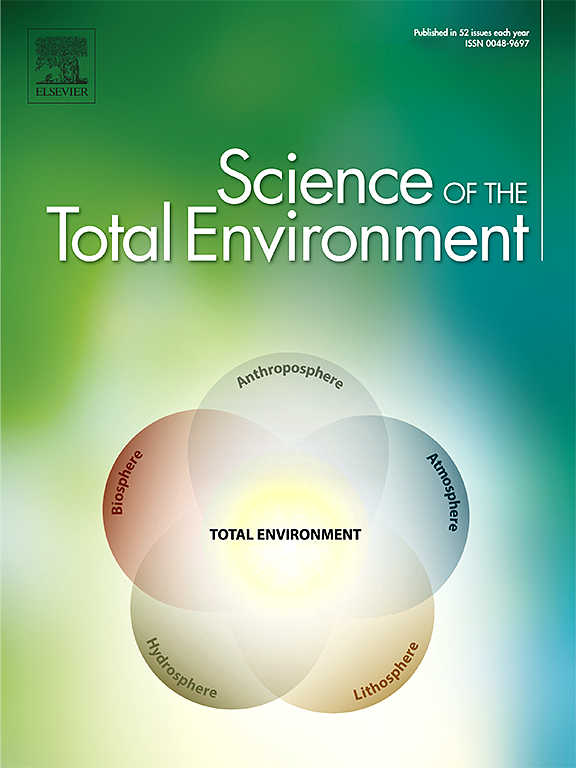农用食品苗期向循环经济过渡:番茄托盘生命周期评价。
IF 8
1区 环境科学与生态学
Q1 ENVIRONMENTAL SCIENCES
引用次数: 0
摘要
国家和国际准则呼吁通过引入循环经济提高农业的环境可持续性。最近的研究调查了在该领域引进新技术和方法的情况,但是很少关注苗圃的初始阶段或有关材料的管理,也没有科学地计算其对环境的影响。为了填补这一空白,本文将重点放在意大利的一个案例研究上,该案例研究量化了全球用于种植、运输和移植番茄幼苗的传统种子托盘对环境的影响,并从循环经济的角度提出并评估了两种替代方案。为此,将生命周期评估(LCA)方法应用于传统和两种新的可重复使用、可回收、可洗涤的种子托盘,比较它们的整个生命周期。原始数据由三家制造商、两家托儿所和四家农场提供,使用SimaPro软件进行建模。它们的环境影响是考虑到全球变暖、富营养化、酸化、元素和化石燃料的非生物耗竭、臭氧层耗竭、水资源短缺和光化学氧化的可能性来计算的。结果表明,无论用于种罐的材料类型如何,材料的提取和生产阶段在生命周期中影响最大。拟议的托盘比传统的不可重复使用的膨胀聚苯乙烯托盘更具环境可持续性。这项工作还量化了种子罐的重量减轻以及操作人员更好地处理它们所带来的环境效益,避免了损坏和损失。此外,它还展示了所提出的可重复使用的解决方案如何更环保,在全球变暖的潜在情况下,将影响减少了三分之一。总之,该研究提供了可行的替代方案,可以在世界各地的市场上使用,减少了苗期和移栽阶段的总体影响。本文章由计算机程序翻译,如有差异,请以英文原文为准。

Transition toward circular economy in the agrifood seedling phase: A Life Cycle Assessment on tomato trays
National and international guidelines call for greater environmental sustainability in agriculture through the introduction of the circular economy. Recent studies investigate the introduction of new technologies and methodologies in the field, however, few focus on initial stages at the plant nursery or the management of the involved materials, and none scientifically calculate their environmental impact. To fill this gap, this paper focuses on an Italian case study that quantifies the environmental impact of the traditional seed trays used worldwide for growing, transporting and transplanting tomato seedlings, proposing and evaluating two alternatives from a circular economy perspective. To do this, the Life Cycle Assessment (LCA) methodology was applied to the traditional and to two new reusable, recyclable, washable seed trays, comparing their entire life cycles. Primary data, provided by three manufacturers, two nurseries and four agricultural farms, were modelled using SimaPro software. Their environmental impact was calculated considering the potentials of global warming, eutrophication, acidification, abiotic depletion of elements and fossil fuels, ozone layer depletion, water scarcity and photochemical oxidation. Results show that, irrespective of the type of material used for the seed pots, the extraction and production phase of the materials is the most impactful in the life cycles. The proposed trays resulted more environmentally sustainable than the traditional non-reusable expanded polystyrene tray. The work also quantified the environmental benefit achieved with the weight reduction of the seed pots and their better handling by operators, which avoided breakages and losses. Furthermore, it is shown how the proposed reusable solutions can be greener, reducing the impacts up to a third in the case of global warming potential. In conclusion, the research offers viable alternatives that can be used in the market all over the world, diminishing the overall impact of the seedling and transplanting phases.
求助全文
通过发布文献求助,成功后即可免费获取论文全文。
去求助
来源期刊

Science of the Total Environment
环境科学-环境科学
CiteScore
17.60
自引率
10.20%
发文量
8726
审稿时长
2.4 months
期刊介绍:
The Science of the Total Environment is an international journal dedicated to scientific research on the environment and its interaction with humanity. It covers a wide range of disciplines and seeks to publish innovative, hypothesis-driven, and impactful research that explores the entire environment, including the atmosphere, lithosphere, hydrosphere, biosphere, and anthroposphere.
The journal's updated Aims & Scope emphasizes the importance of interdisciplinary environmental research with broad impact. Priority is given to studies that advance fundamental understanding and explore the interconnectedness of multiple environmental spheres. Field studies are preferred, while laboratory experiments must demonstrate significant methodological advancements or mechanistic insights with direct relevance to the environment.
 求助内容:
求助内容: 应助结果提醒方式:
应助结果提醒方式:


